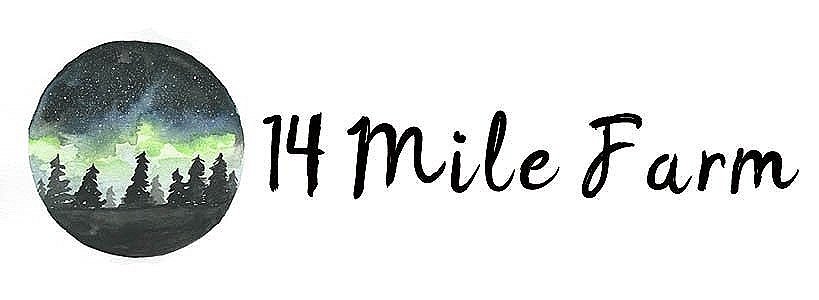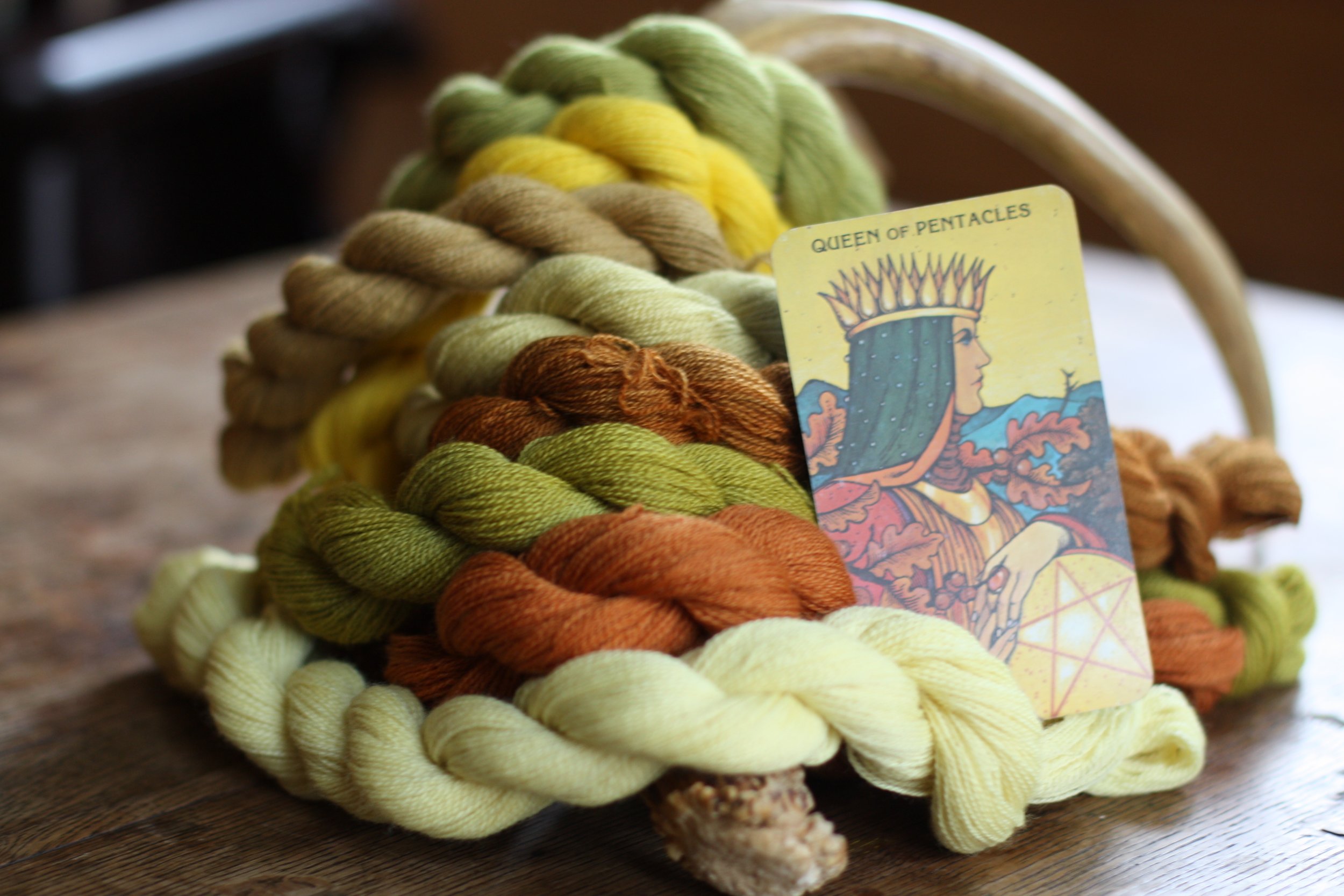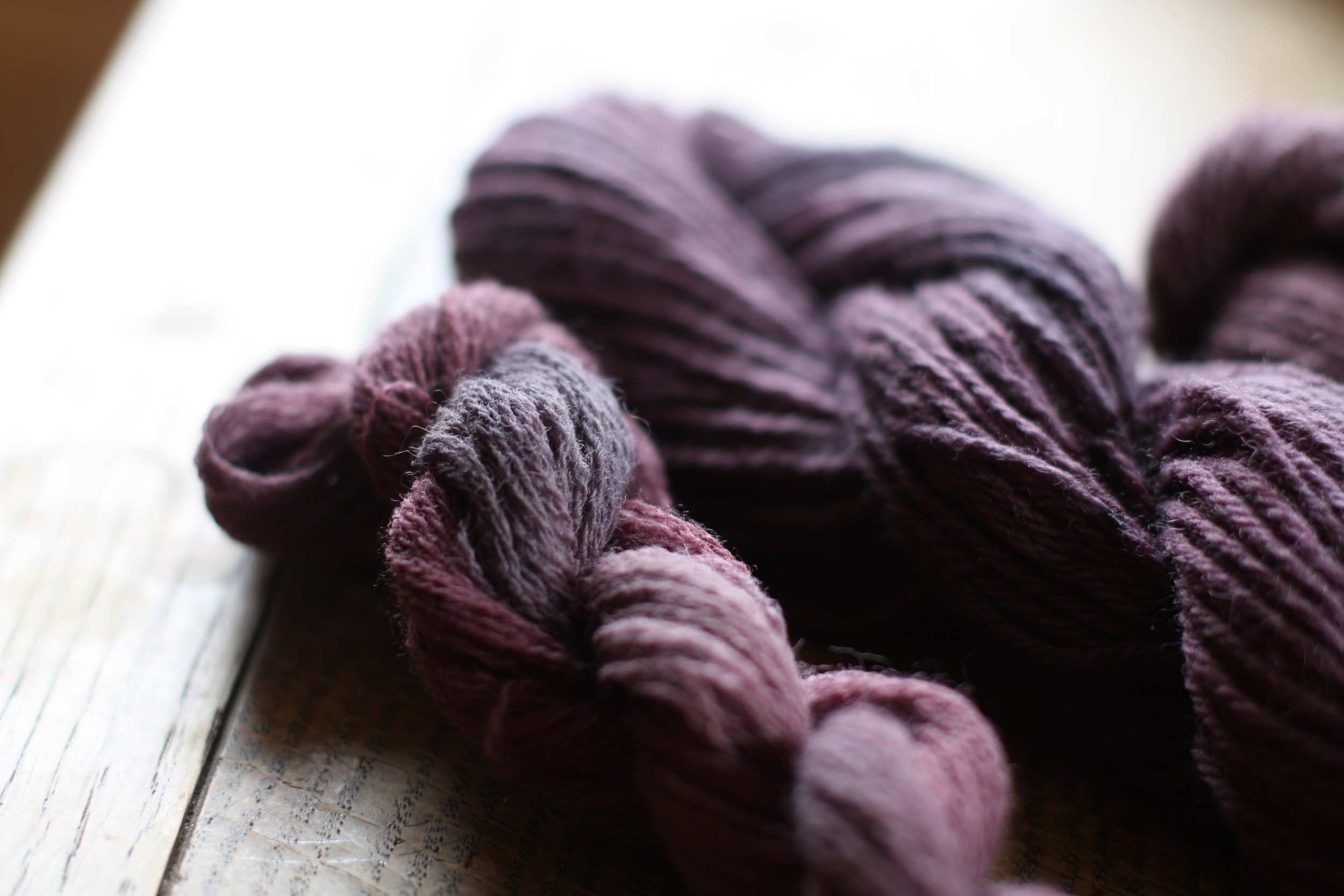Welcome! Please feel free to subscribe to the newsletter to get studio updates and projects from the archives straight to your inbox.
The Queen of Pentacles in the Dye Garden
The Queen of Pentacles has always been the card I choose to represent myself, whether for a tarot spread, a spell, or just for fun. Specifically THIS Queen of Pentacles, from this deck (the Morgan-Greer, if you're curious). I'm a little bit blown away by just how perfectly these colors work for the card.
I went into the Dye Garden dye day with my local Guild thinking that I would use the wool I played with as a weft for a personal piece, and when these colors came out of the dye pot I knew just what the piece was going to be about.
I still have a bit of experimenting to do: these skeins were mordanted with a combination of alum and cream of tartar. Other traditional mordants include copper and iron, both of which are useful as post-dye mordants to shift the colors. So I made sure to dye 3 mini skeins of almost every plant color here and once the woodstove is going for the winter, I'll simmer a skein of each color in a copper cauldron I happen to have and a skein of each in a cast iron dutch oven. I'm excited to see how much more variety that might give my colors!
Represented here are colors from tansy, marigold, indigo, a relative of the borage plant known as bug-loss, coreopsis, black eyed susan, and a pot of gleanings from my yard and woods including birch and alder and aspen and yarrow and rhubarb leaves.
This wool will go on the upcoming Minor Arcana warp to represent the Queen of Pentacles. Every piece on the warp will be unique, representing a different card, with most woven in all undyed yarns and then whole-cloth dyed after weaving in a variety of techniques.
Natural Dye Experiments
Every year, my local weaving guild plants and tends and harvests a dye garden at the University's botanical gardens. Every year at the end of the summer, the guild hosts a dye day from the plants they've grown. For one reason or another I've never made it to the dye day, though I've put in some hours weeding the garden from time to time.
This year, I made it as far as mordanting* the wool to dye, and when life intervened and I missed the event, I was left with nearly two pounds of mordanted wool on my hands. What to do? Why, go to the woods of course!
I wrapped my berry pie baby up on my back and she reached over my shoulder as I harvested a pot full of rosehips, another of alder cones and leaves, another of yarrow. We pulled chaga** from the cupboard - I never do seem to make tea out of it as I intend to - and put that to boil as well. My husband brought home some chokecherries from a red barked Canadian chokecherry tree that grows on campus.
As I simmered the plants and then simmered the wool in their dyebaths, first my kitchen and then my whole house began to smell delightfully of the woods. It was a few-day process of stirring, soaking, simmering, and cooling the wool during which I thoroughly felt myself inhabiting the archetype of the witch in the woods. I loved every minute of it.
The rosehips yielded the most delicate neutral with a hint of rose gold. The alder gave me a lovely beige, the chaga a deep antique gold. And the chokecherry gifted me with the loveliest purple I have ever seen!
So now I have a pile of naturally dyed skeins with which to play! I dyed three different wools - a quite fine laceweight, one that is perhaps fingering weight, and a partial cone of 100% Shetland wool that is a little thicker than the one and a little thinner than the other. I'm anticipating cowls on a warp or two this winter and I'm quite tempted to put some on a tapestry loom as well.
I'm looking forward to next year's dyepots!
*Mordanting is a process of treating wool (and/or other protien fibers) to prepare it to take color from naturally found sources (plants, fungi, etc). It is an archaic word that happen to adore. One of the most common mordants, and one of the safest, is alum which is a mineral salt. I was unhappy with one of the dyebaths that I ended up experimenting with. I took those skeins and overdyed them. Some I re-mordanted and some I did not. The difference was quite striking! The skeins that had been re-mordanted for the second dyebath took the color so very much better.
**Chaga is a wild fungus that can be found growing on birch trees which has medicinal effects in both an infusion and/or decoction (water extraction) and a tincture (alcohol extract).


























